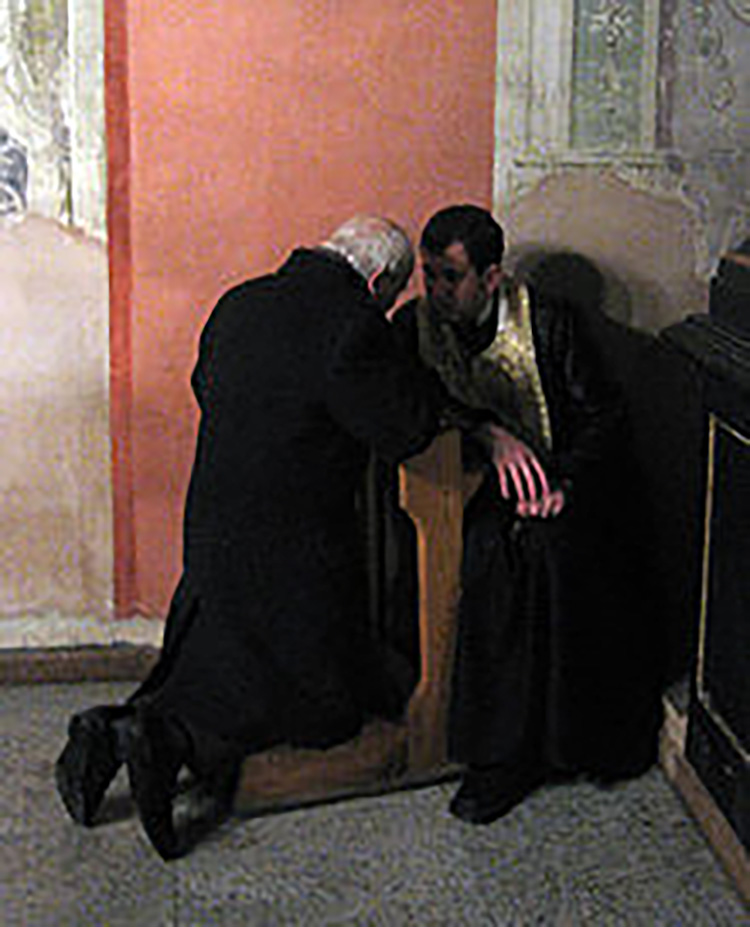|
Services:
Sunday Morning Liturgy
8:30 AM
Orthros
9:30 AM
Liturgy
12:00 PM Paraklesis
(Healing) Service to
Saint Nectarios
There will be Wednesday
7:00 PM Paraklesis
Service to
Saint Nectarios
Church is
open:
Monday thru Friday
10:00 AM – 4:00 PM
Saturday: Open
Sunday: Open from
8:30 AM – 12:00 PM
Our services
are in
Greek & English
Office Hours:
Monday thru Friday
10:00 AM – 4:00 PM
Email Address:
stnectarioschurch@gmail.com
|
|
|
1 / 10

Sacrament of Baptism
2 / 10

Fortieth day churching
3 / 10

Holy Chrism
4 / 10

5 / 10

Holy Confession
6 / 10

7 / 10

Holy Unction
8 / 10

Sacrament of Marriage
9 / 10

Funeral Service
10 / 10

Memorial Service
|
|
|

WeShare
 Secure SSL/TLS
Connection Secure SSL/TLS
Connection
|
|
|
|

|
St. Nectarios Church is a parish of Metropolis of San Francisco of
the Greek Orthodox Archdiocese of America
|

Click Here to
Contact Us
|
|
|
|
The
Sacramental Life of the Orthodox Church
Rev. Alciviadis
C. Calivas, Th.D.
In recent centuries, the Orthodox Church
has recognized seven mysteries for sacraments: baptism; chrismation; the
Eucharist; penance; the priesthood; marriage; and the anointing of the
sick (Euchelaion).
While the New Testament does not
specifically enumerate the holy mysteries, it is clear that the Apostolic
Church received people through baptism and chrismation (confirmation);
celebrated the Eucharist at least weekly on the Lord's day; readmitted
penitents through an act of penance; selected and ordained her ministers;
sanctified the union of husband and wife; and extended the healing
ministry of Christ to those in need of divine succor. It is evident,
therefore, that the Church gave special attention to these acts from the
beginning, despite the absence of explicit testimony from Scripture, the
early Fathers or the Ecumenical Councils.
HOW THE MYSTERIES BECOME OPERATIVE.
The Church, moved by the Holy Spirit,
prescribes the manner of the administration of the holy mysteries. The
mysteries are operative and effective when two basic conditions are
observed. First, the ministers of the mysteries, the bishop and/or
priest, must be canonically ordained and in canonical order with the
Church. Second, they must be "ordained" to conduct the
prescribed rites of the Church, not because they contain "magical"
powers in themselves, but because the rites express the faith and the
mind of the Church concerning these saving acts.
The rites contain prayers, petitions,
Scripture readings, hymns, gestures and liturgical actions. Rooted in the
New Testament and shaped by the historical process in the crucible of the
living and dynamic community of faith - the Church - the rites embody the
vision of the new life, confirm the real presence of divine grace, and
communicate salvation and sanctification to the believers prepared to
receive these divine gifts.
|
|
|













